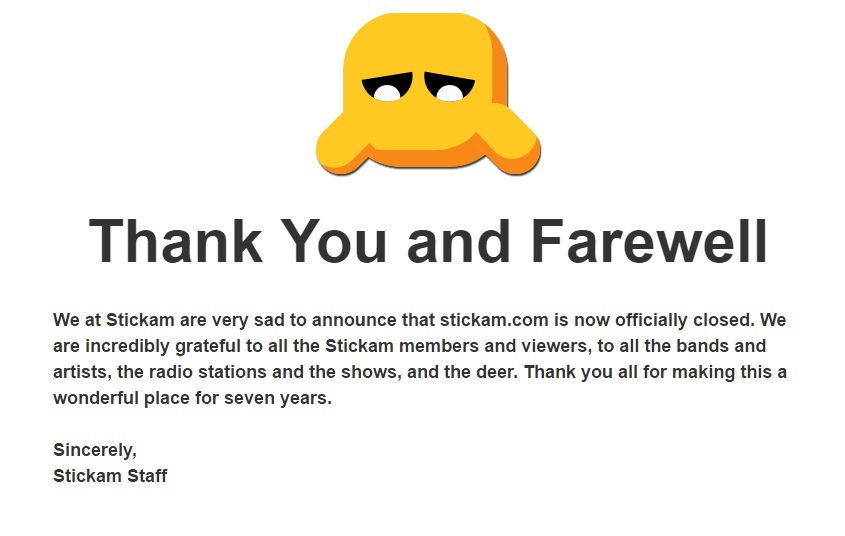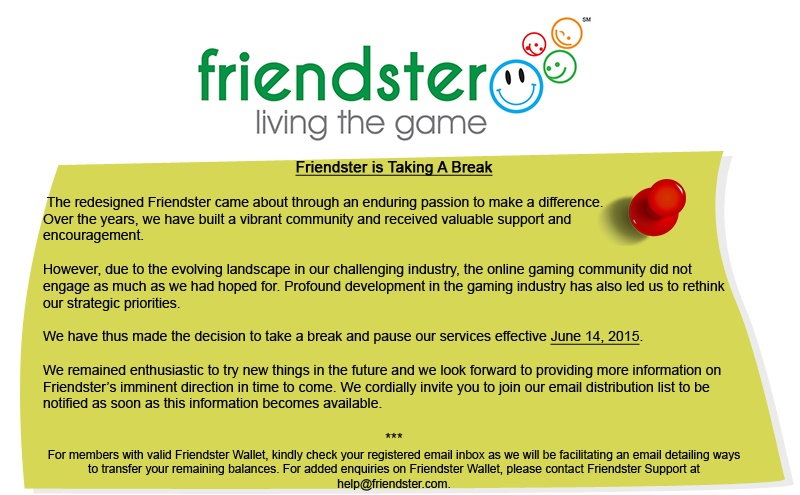To launch a successful social networking website is to hit the jackpot. Just look at how much money was made in Facebook and Twitter, and look at how rapidly the valuation is growing on Instagram and Snapchat. But building and maintaining a social media website is difficult. It completely relies on other people’s willingness to use the website. It also relies on steady growth in users – that’s where twitter has been having lately. They have loads of active users but they aren’t growing steadily. Facebook is growing steadily, and snapchat is growing rapidly. Most attempts at creating a social network fail, and so there are many dead social networks. Even Google is having trouble with their own social media service. Here are 10 examples of dead social networks.

Qapacity
Qapacity was one of many business-based social networks fighting over the spot that LinkedIn now holds. Unlike LinkedIn, Qapacity was more focused on people’s actual businesses rather than people as individual professionals. It gave users the option of creating a webpage for their business, and promote it to the online community. But in 2012, it was announced that the website was closing down. Now dead, they had been struggling to gain new users and make revenue from the service for a while. I think the reason for this is that their concept is obsolete. People can just use Facebook or twitter to create pages for their business, and probably reach more people by doing it that way.

Orkut

Orkut got it’s name from it’s founder, Orkut Büyükkökten. I just like that he gave his own first name to a social network. Orkut was an absolute failure in the western world, but they somehow became a huge hit in emerging markets. Of their one hundred million users, 53 percent were in Brazil, and 18 percent were in India. This might make you think the website was a success, and it was owned by google. So how did Orkut join the other dead social networks? Well the bigger social networking websites were establishing serious positions in emerging markets and it was clear that Orkut wouldn’t be able to compete. It wasn’t as smooth as FaceBook and it wasn’t growing as fast as instagram.

DailyBooth
DailyBooth was like a primitive version of instagram. But it was much more limited than instagram because it only really gave people the option of taking one photo per day. Users would add a caption to go along with the photo. The idea is that it would be an online scrapbook of pictures of yourself so you could look back on it one day and think “Wow that’s what I look like” or “Wow I said some dumb things back then”. DailyBooth was fairly popular with teenagers, and was backed by Y Combinator. But their membership didn’t grow as fast as intended and the website was shut down in 2012. It’s thought that their name made it harder for them to spread to new demographics, but they never changed it.

My Opera

Don’t let the name fool you, My Opera had nothing to do with performance art. It was named after the web browser it was built into – which was literally called Opera. It was basically just a place for users of the web browser to form a community. It’s actually a good idea when you think about it, the community would support the growth of the web browser and give people a reason to stay. But the social network is now dead. Not enough people used the network to cover the cost of maintaining it, so it made more sense to just shut the whole thing down to avoid tanking the web browser it was supporting.

Stickam

Stickam was a live streaming social network. Live streaming only recently became a truly popular trend so Stickam was way too far ahead of it’s time. It was launched in 2005, when live streaming wasn’t what it is today. I mean, we’ve recently been seeing huge successes with services like twitch, periscope, meerkat, and Facebook and YouTube has added live stream services of their own. But Stickam gave it a good go anyway, going as far as to produce their own internet shows and stream them live. Stickam was swiftly overtaken by other websites as their service didn’t work smoothly at all. So it was eventually forced to close down after seven years of bizarre live shows.

Ryze

Today, Ryze is the name of a trampoline business in Scotland. But it used to be a rapidly growing social networking website. Like so many other dead social networks, Ryze was attempting to become a business-based service. The logic behind them was sound – business websites are highly profitable, as are social networks. Combining the two would create a gold mine. Technically the website is still live. But it’s as dead as Queen Victoria. The aim of the website was to connect new entrepeneurs with eachother online, and see who will do business with eachother. They received a lot of attention from the media but still failed to grow substantially.

43 Things

43 Things was a really interesting one. It was created to be an online community based around self improvement style goal setting. It was an ambitious idea, to create a social network of people who would support and encourage each other. That was all good until they realized their website wasn’t making enough income to sustain itself. The website was hindered by the fact that it relied heavily on RSS, which has been declining in popularity for years now. The structure of the website wasn’t terribly sound either, making it difficult to navigate. Two years ago, the website was taken offline.

Open Diary

Open Diary was quite like livejournal, where people would write in their own online diary for anyone to read. It was essentially the first website to combine an open diary platform with a social networking service. The website launched back in 1998, making it one of the oldest social networks. But over time, open diaries became less and less popular as people took to either launching their own blogs, or posting shorter messages on platforms like twitter. In 2004 and 2008, Open Diary was hacked and many people’s personal data was stolen. The incident was extremely costly to repair, leaving Open Diary with considerable debt. They were forced to introduce paid subscriptions for the website to pay off their debt. From then on, they were in decline.

Friendster

Friendster was a social network focusing on internet gaming and building a community around these games. At one point, it boasted over 8 million users. That was in 2010, they had 115 million users just one year later. The vast majority of their traffic came from Asia. And despite the rapid growth they once saw, their engagement was steadily declining. In 2015, friendster was shut down. Technically the service is only suspended with the goal of returning soon. But realistically they’re never coming back. When you suspend a social network, it’s unlikely you’ll be able to make up the ground you lost during the suspension.

iTunes Ping
iTunes Ping was an attempt by Apple to create their own social network. At the time of it’s launch it was pegged as a soon to be major player in the social media business. It was a music-based social network, attempting to create a big community around itunes. The benefit that would bring is obvious. The social network was an absolute failure. It’s was never popular and actually quite difficult to use. So Apple eventually decided to close Ping down and further integrate other social networks with iTunes, that way you could link already-existing communities with the music service. A much better business model. Of all the dead social networks, this is the one I expected to be more of a big deal.

